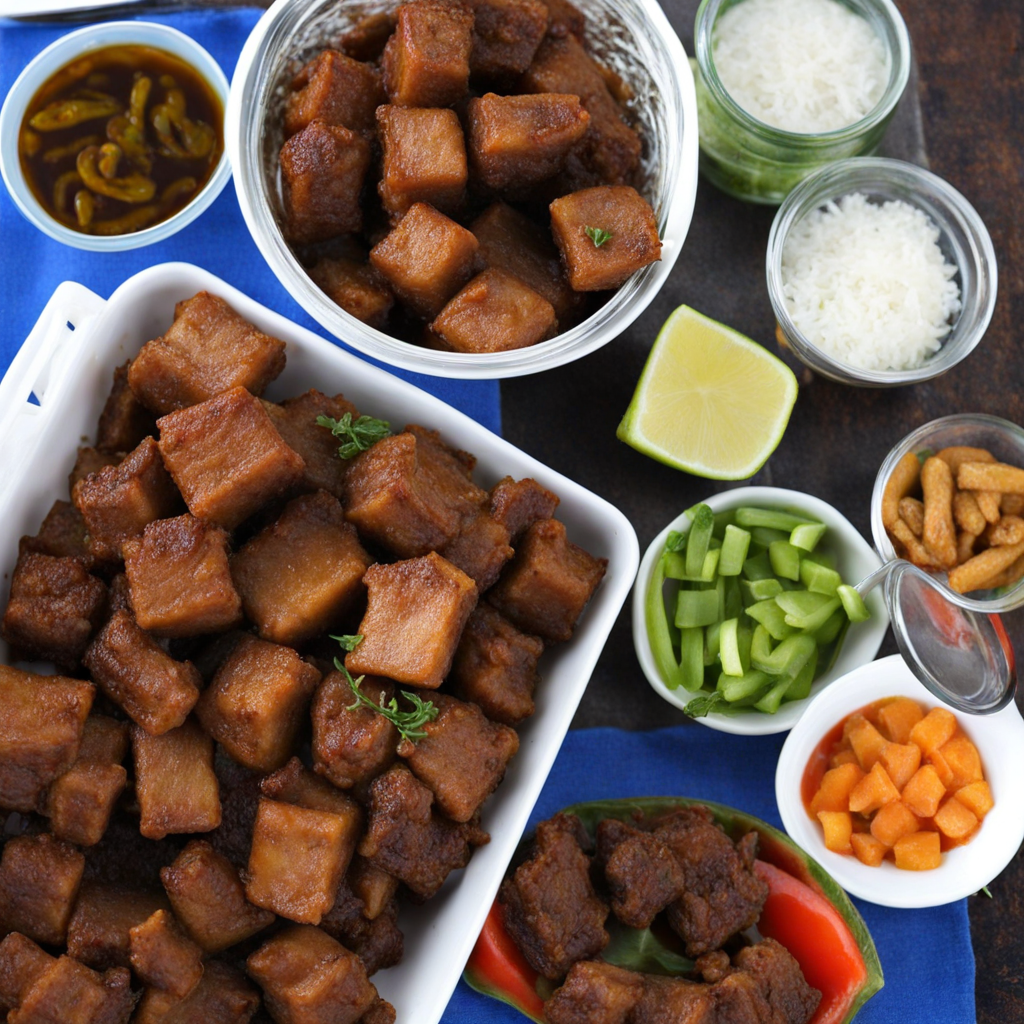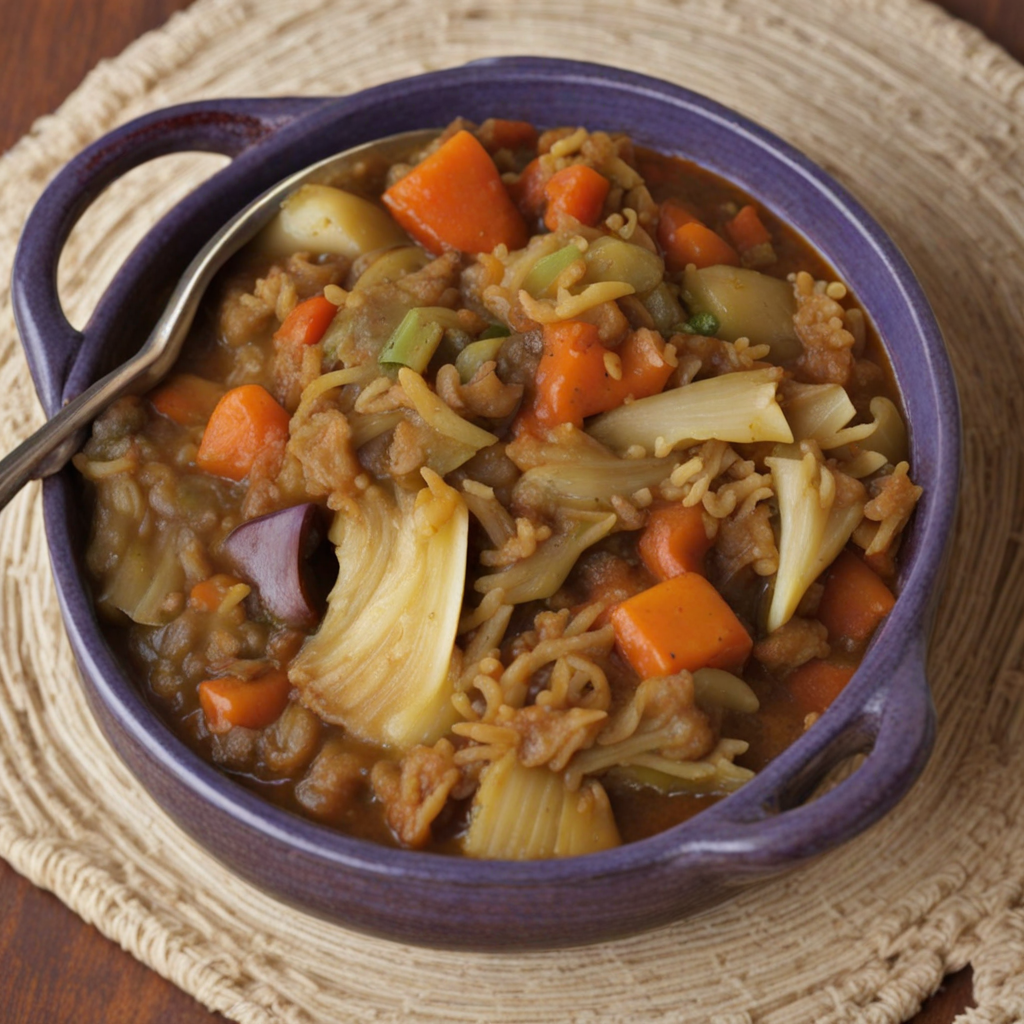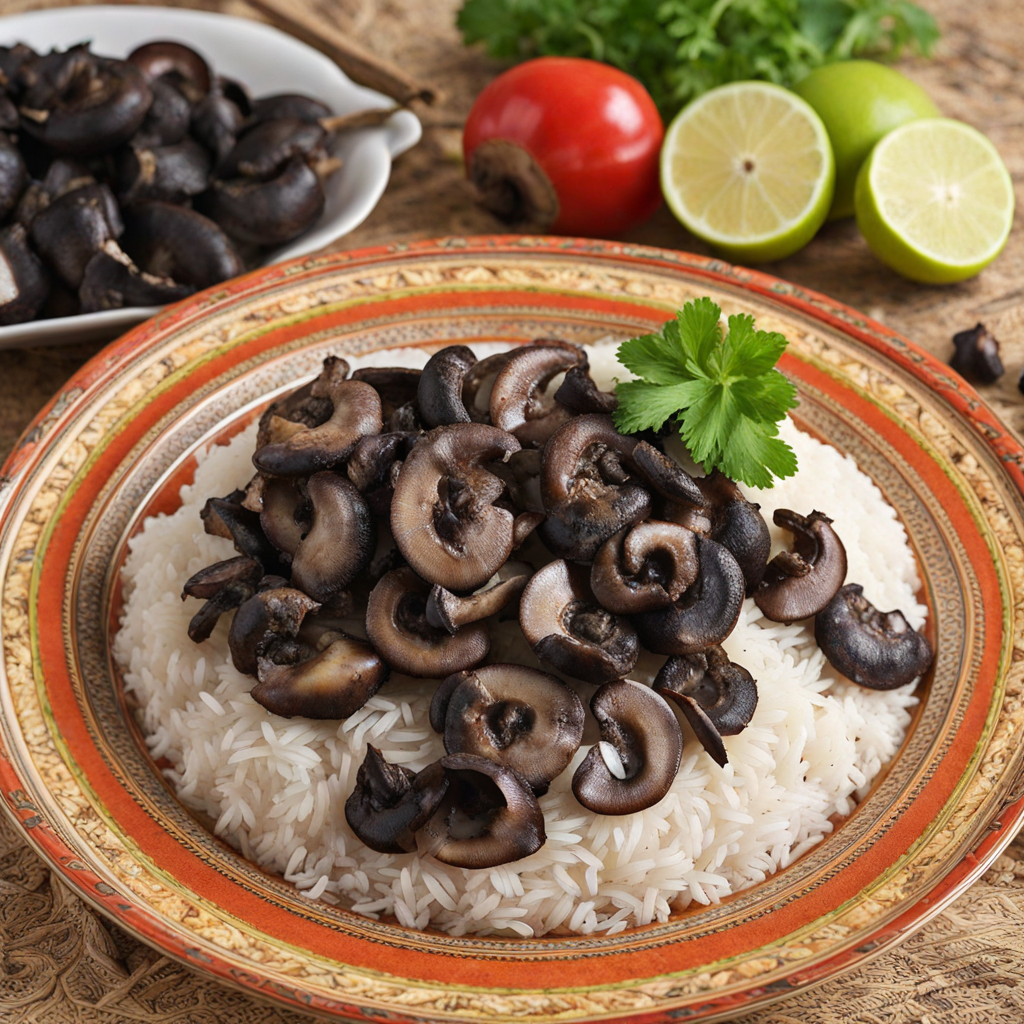Griot
Griot is a quintessential Haitian dish that showcases the vibrant flavors and culinary traditions of the Caribbean. This dish features marinated pork, typically cut into bite-sized pieces, which are infused with a medley of spices, citrus juices, and aromatic herbs. The marinade often includes key ingredients such as sour orange juice, garlic, and thyme, creating a balance of tangy and savory notes that penetrate the meat, making it incredibly tender and flavorful. The marination process not only enhances the taste but also tenderizes the pork, allowing it to absorb all the rich flavors before cooking. Once marinated, the pork is usually fried to achieve a golden brown crust that adds a delightful crunch to each bite. The result is a succulent interior that contrasts beautifully with the crispy exterior, making every mouthful a delightful experience. Griot is often served with a side of pikliz, a spicy pickled vegetable relish that provides a zesty kick, complementing the richness of the pork. The combination of the spicy, tangy pikliz with the hearty griot creates a balance that tantalizes the palate and invites a second helping. In Haiti, griot is more than just a meal; it’s a dish that holds cultural significance and is often enjoyed during celebrations and family gatherings. Commonly served alongside rice and beans or fried plantains, griot embodies the essence of Haitian cuisine, where bold flavors and communal dining come together. With its layers of taste and texture, griot is a culinary journey that transports you to the heart of Haiti, inviting you to savor the rich heritage and warmth of its people.
How It Became This Dish
The Rich History of Griot: Haiti's Culinary Treasure #### Origins of Griot Griot, a beloved dish in Haitian cuisine, is essentially marinated pork that is slow-cooked until tender and then fried to achieve a crispy exterior. Its origins can be traced back to the rich tapestry of Haitian history, which is influenced by a confluence of indigenous Taino, African, French, and Spanish cultures. The dish itself is a testament to the resilience and creativity of the Haitian people, who have transformed their culinary practices over time, adapting them to their available resources and cultural influences. The name "griot" is derived from the French word "griot," which refers to a storyteller or a poet, a nod to the oral traditions that are prevalent in many African cultures. In Haiti, griot has become a symbol not only of culinary excellence but also of cultural expression, embodying the stories and the spirit of the Haitian people. #### Cultural Significance The significance of griot goes beyond mere sustenance; it is a dish that embodies celebration and community. Traditionally served during festive occasions such as weddings, birthdays, and religious ceremonies, griot is a dish that brings people together. It is often accompanied by "pikliz," a spicy pickled vegetable condiment, and served with rice and beans or fried plantains, creating a vibrant and flavorful meal. In Haitian society, food is a crucial aspect of cultural identity. Griot serves as a means of preserving heritage, as families pass down recipes and cooking techniques through generations. The dish has become synonymous with Haitian identity, both at home and in the diaspora, where it is often featured in cultural festivals and gatherings that celebrate Haitian culture. Moreover, griot is a dish that tells stories—stories of struggle, survival, and triumph. After gaining independence from colonial rule in 1804, Haitians sought to redefine their identity, and food became a key element of that process. Griot, in this context, symbolizes the blending of cultures and traditions, showcasing how food can serve as a bridge connecting past and present. #### Development Over Time The evolution of griot can be viewed through the lens of historical events and societal changes in Haiti. During the colonial period, enslaved Africans were brought to the island to work on sugar plantations. They brought with them their culinary traditions, which blended with the indigenous Taino practices and the French cuisine of the colonizers. The result was a unique fusion that laid the groundwork for contemporary Haitian cooking. Enslaved individuals often had limited access to high-quality meats, leading them to innovate with the ingredients they could obtain. Pork became a staple due to its availability and the cultural significance of the animal in African culinary traditions. The practice of marinating and frying meat can be traced back to African cooking methods, which emphasized the importance of seasoning and flavor. As Haiti transitioned from a colony to an independent nation, the culinary landscape continued to evolve. The abolition of slavery in 1804 allowed for greater freedom of expression in food preparation, and griot became a staple in the newly formed Haitian identity. The dish was not just a meal; it was a way to assert cultural pride and heritage at a time when the nation was carving out its place in the world. In the 20th century, as Haitians migrated to other countries, particularly the United States and Canada, griot found its way into the diaspora. This migration contributed to the globalization of Haitian cuisine, bringing attention to dishes like griot that encapsulate the rich history and flavors of the island. In urban centers with significant Haitian populations, such as Miami, New York City, and Montreal, restaurants specializing in Haitian cuisine began to flourish, introducing griot to new audiences. #### Griot in Modern Times In contemporary Haiti, griot remains a staple in both homes and restaurants. Its preparation has become an art form, with families often adding their unique twists to the recipe, showcasing the creativity and diversity within Haitian cooking. The dish is also a source of pride, as it represents not only a culinary tradition but also the resilience of the Haitian people in the face of adversity. The increasing popularity of Haitian cuisine in global culinary circles has led to a renewed interest in dishes like griot. Chefs are experimenting with traditional recipes, incorporating modern techniques while still honoring the dish's origins. This evolution reflects a broader trend in gastronomy, where chefs are increasingly looking to traditional and indigenous foods for inspiration. Moreover, cultural festivals celebrating Haitian heritage often feature griot prominently, allowing the dish to serve as a centerpiece for community gatherings. These events not only highlight the culinary aspect but also foster a sense of belonging and cultural pride among participants. #### Conclusion Griot is more than just a dish; it is a rich narrative woven into the fabric of Haitian culture and history. Its origins reflect the complexities of Haiti’s past, while its present and future embody the resilience, creativity, and unity of its people. From its humble beginnings as a meal for celebration to its status as a symbol of Haitian identity, griot tells the story of a nation that has faced challenges yet continues to thrive through its vibrant culinary heritage. As we savor a plate of griot, we partake in a rich tradition that not only nourishes the body but also feeds the soul, connecting us to the stories of generations past and the hopes of those yet to come. In every bite, we taste history, culture, and the indomitable spirit of Haiti.
You may like
Discover local flavors from Haiti







